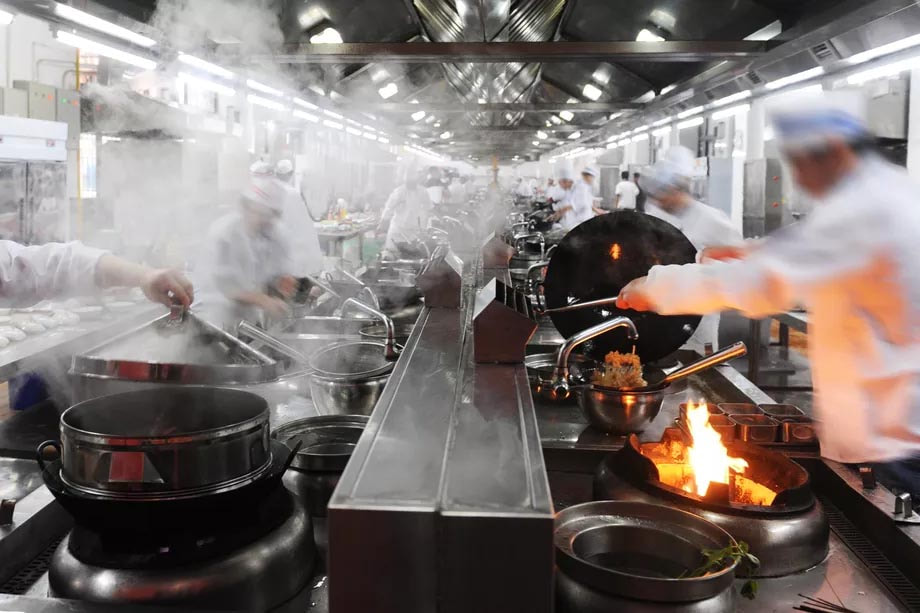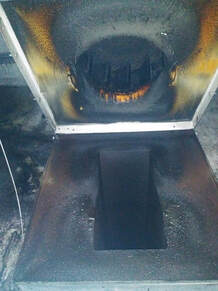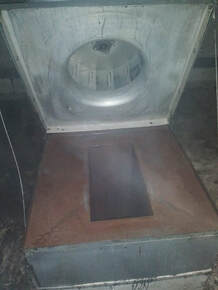 One of the first customer experiences, upon working through the front door of a restaurant, is cleanliness. From kitchen or dining area odors, scuffed tile flooring or an unclean bathroom, the first warning of a potentially unsanitary facility can send guests heading for the door. Additionally, high standards need to be met in order to avoid health-code violations as well as negative reviews of customers getting sick or employees being seriously injured. Need more proof? According to a recent Harris poll survey, 86 percent of U.S. adults equate the cleanliness of a restaurant’s restroom with the cleanliness of its kitchen. The survey also revealed that 75 percent of U.S. adults would not return to a restaurant with dirty restrooms. Maintaining a clean, healthy and accident free facility is important to your bottom line. This can be a complicated task since there are various areas to clean and maintain. Ultimately, overall guest experience and the health of employees contributes to how well does a restaurant perform. Deciding to take on a portion of the tasks yourself or hire an experienced commercial restaurant hood cleaning service? The following supplies should always be on-hand: broom, floor buffer, mop, vacuum, scrub buckets, microfiber cloths, cleaning brushes, trash bags, cleaning chemicals like disinfectants, bleach and glass cleaner. The most effective and hygienic cleaning is to use a blend of techniques and tools to remove germs and soil. Color-coded microfiber cloths for surface cleaning are 99 percent more effective than traditional cloth at removing germs and soil. Furthermore, the reduction of cross-contamination from one area to the next, microfiber cloths should be color-coded, with exact color cloths designated for use in specific areas of the facility like the dining, kitchen or bathroom. Cleaning the restaurant’s entrance, dining area, kitchen or bathroom, disinfectant solution needs to be strong enough to kill germs but safe for restaurant environment. It is critical to read disinfectant labels to ensure they’re safe for the specific use in and around the restaurant areas. Routinely, we think of the most noticeable surfaces to clean are countertops, chairs and tables but other overlooked areas include:
Maintaining a clean and hygienic restaurant will ensure patrons keep coming back to your facility. From the back of the kitchen, to the entryways, floors and restrooms, first impression of a guest’s mind will leave a positive outlook for customers, partners and employees.
0 Comments
Commercial kitchen hood systems play a vital role evacuating smoke, heat and odors from cooking areas. Overtime, kitchen managers find themselves determining the levels of grease buildup within the kitchen hood ventilation system. If grease builds up, a safety hazard to both employees and dining patrons pose a great risk. The leading cause of kitchen fire is grease buildup. Proper maintenance and thorough cleaning of the exhaust hood filters, exhaust hood and ductwork can reduce this safety hazard. The National Fire Protection Agency requires all commercial kitchens to professionally clean the kitchen hood ventilation systems. The inability to meet these requirements not only increases the chance of kitchen fires but large fines along with forced closure of the kitchen facility. Best practices are laid out in NFPA 96 guide for the exhaust hood cleaning. The guide includes the frequency of cleaning for different types of kitchens:
Kitchen employees are relied on to clean the outside surfaces of the exhaust hood system as part of their role. The deeper cleaning, laid out in NFPA 96 guide, is to be carried out by trained hood cleaning professionals.  The scope of exhaust hood cleaning work is as follows:

Certified experts in commercial kitchen hood cleaning is a necessity for any commercial cooking operation, both to reduce the risk of fire and avoid noncompliance. Hood Master Service is a reputable hood cleaning service and happy to walk you through their procedures, provide “before and after” photos, and work with kitchen management to ensure safety and compliance. Hood Master Service is commercially insured and in compliance for hospitals, schools, universities, airports, nursing homes, restaurants & malls. Contact Hood Master Service for a free kitchen hood system inspection and evaluation. |
AuthorAlberto Isola has been cleaning hoods since 1995. He understands the proper maintenance and thorough cleaning is imperative for today's busy commercial kitchens. Archives
Categories |
|
Connect With Us
Member of NFPA
|
Hood Master Service, LLC is an equal opportunity employer committed to a diverse and inclusive workforce. Hood Master Service is a drug free workplace. The unlawful manufacture, distribution, dispensing, possession or use of a controlled substance is prohibited and may result in dismissal.
© 2022 Hood Master Service, All rights reserved.
5331 Primrose Lake Cir Suite 227 Building 5 Tampa, FL 33647
Website by eDirect, Inc.
5331 Primrose Lake Cir Suite 227 Building 5 Tampa, FL 33647
Website by eDirect, Inc.

 RSS Feed
RSS Feed


